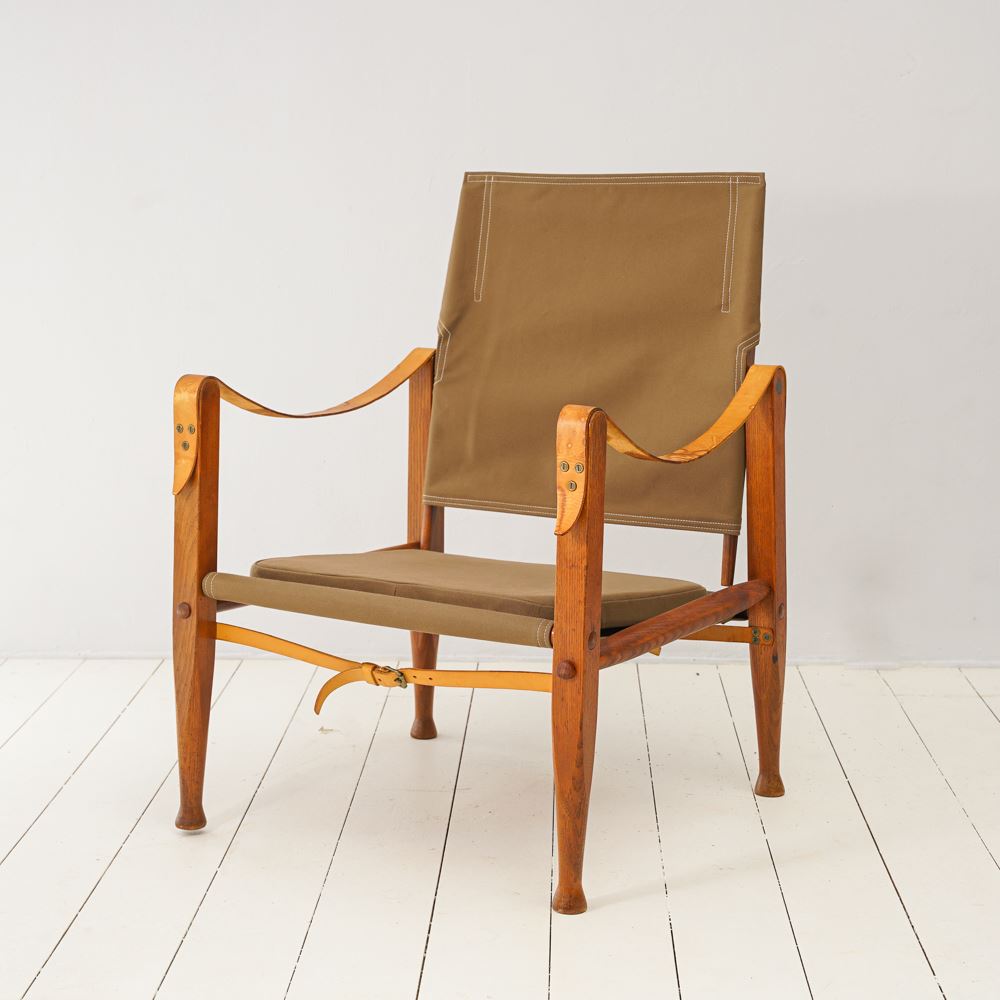
遊獵椅
設計師 | 卡爾‧克林特 (丹麥)
設計時間 | 1933
品牌 | 魯德.拉斯穆森 (丹麥)
規格 | 寬57 x 深57.5 x 高82公分
材質 | 梣木.帆布
Safari Chair
DESIGNER.Kaare Klint (Denmark)
DESIGNED.1933
MANUFACTURER.Rud. Rasmussen (Denmark)
DIMENSIONS.W57 x D57.5 x H82cm
MATERIALS.Ash, canvas
卡爾‧克林特(Kaare Klint)的遊獵椅(Safari Chair)靈感來自美國探險家馬丁和歐薩·約翰遜(Martin and Osa Johnson)在非洲探險時拍攝的照片,這些照片中出現了類似英國軍隊使用的 Roorkhee椅,一種輕便的可拆卸軍事行軍椅。Klint 將這種設計進行了改良,強調簡化、輕便與易於攜帶。遊獵椅於 1933 年首次亮相,它的設計可以在不使用工具的情況下,輕鬆拆卸並存放在專用的帆布袋中,非常適合旅行使用。
1926 年,克林特與建築師伊瓦爾·本特森(Ivar Bentsen)合作,將皇家弗雷德里克斯醫院(Det kongelige Frederiks Hospital)改建為丹麥藝術與設計博物館,現為丹麥設計博物館(Designmuseum Danmark),這個項目開啟了克林特與家具廠Rud. Rasmussen長期合作的序幕,該公司為博物館製作了大量家具,並延續了克林特的設計,包括遊獵椅。
The Safari Chair by Kaare Klint was inspired by photographs taken during the African expeditions of American explorers Martin and Osa Johnson. These images featured a military-style chair known as the Roorkhee chair, used by British officers for its portability and ease of assembly in the field. Klint adapted this design, emphasizing a simplified, lightweight structure that could be disassembled without tools and stored in a canvas bag, making it ideal for travel.
The Safari Chair debuted in 1933 and became a hallmark of functionalist design. Its construction, made from wood and canvas or leather, demonstrated Klint's focus on practicality and mobility. In 1926, Klint collaborated with architect Ivar Bentsen to convert the Royal Frederiks Hospital into what is now the Danish Museum of Art & Design. This project marked the beginning of Klint's long-term collaboration with the furniture company Rud. Rasmussen, which produced many of his designs, including the Safari Chair. This partnership was instrumental in bringing Klint's innovative designs to the forefront of Danish modernism.